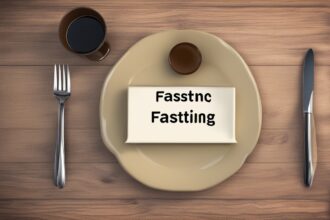Welcome to the world of fasting! If you’ve ever wondered what fasting is all about, you’re in the right place. In this detailed guide on fasting explained, we’ll break down everything you need to know about this ancient practice that’s making a modern comeback. Whether you’re curious about intermittent fasting for weight loss or exploring fasting for spiritual reasons, we’ll dive into the science, benefits, and practical tips to help you get started. Fasting isn’t just about skipping meals—it’s a powerful tool for health and mindfulness when done right. Let’s explore what fasting truly means and how it can transform your life.
What Exactly Is Fasting? Understanding the Basics
At its core, fasting is the voluntary act of abstaining from food, drink, or both for a specific period. While the concept of fasting explained might seem straightforward, it’s a practice that dates back centuries, rooted in cultural, religious, and health traditions. From Ramadan in Islam to Lent in Christianity, fasting has been used for spiritual purification. Today, it’s often associated with health benefits like improved metabolism and mental clarity. Simply put, fasting is about giving your body a break from constant digestion, allowing it to focus on repair and rejuvenation.
The Science Behind Fasting: How It Affects Your Body
Let’s get into the nitty-gritty of how fasting works on a physiological level. When you fast, your body shifts from using glucose (from food) as its primary energy source to burning stored fat through a process called ketosis. Studies, such as those published in the New England Journal of Medicine, show that fasting can trigger autophagy—a cellular “clean-up” process that removes damaged cells and promotes regeneration. This is why many health experts link fasting to anti-aging benefits. Additionally, fasting can lower insulin levels, reduce inflammation, and improve brain function by boosting a protein called BDNF (brain-derived neurotrophic factor). Understanding fasting explained from a scientific perspective shows it’s more than a fad—it’s a biological reset.
Different Types of Fasting: Which One Suits You?
Fasting isn’t a one-size-fits-all practice. There are several methods to choose from, depending on your goals and lifestyle. Here’s a quick rundown of the most popular types of fasting to help clarify fasting explained in practical terms:
- Intermittent Fasting (IF): This involves cycling between eating and fasting periods, such as the 16/8 method (fast for 16 hours, eat during an 8-hour window). It’s great for beginners and often used for weight management.
- Water Fasting: A more intense approach where you consume only water for 24–72 hours. It’s typically done under medical supervision due to its intensity.
- Alternate-Day Fasting: You alternate between normal eating days and very low-calorie or no-food days. It’s effective for weight loss but can be challenging to sustain.
- Religious Fasting: Practices like Ramadan involve abstaining from food and drink from dawn to dusk for a month, combining spiritual and physical discipline.
Each type has unique benefits, so it’s worth experimenting to find what aligns with your needs. Always consult a healthcare professional if you have underlying conditions before starting any fasting regimen.
Benefits of Fasting: Why Should You Try It?
The buzz around fasting isn’t just hype—there’s solid evidence backing its benefits. When exploring fasting explained, it’s clear this practice offers both physical and mental advantages. Research from institutions like Harvard Medical School suggests fasting can aid weight loss by reducing calorie intake and boosting metabolism. It may also improve heart health by lowering blood pressure and cholesterol levels. On the mental side, fasting has been linked to enhanced focus and reduced stress, thanks to stabilized blood sugar levels. Some even report a sense of emotional clarity during fasts, especially in spiritual contexts. While results vary, fasting can be a game-changer when approached mindfully.
Common Challenges and How to Overcome Them
Let’s be real—fasting isn’t always easy, especially when you’re new to it. Hunger pangs, irritability, and fatigue are common hurdles. But understanding fasting explained means knowing how to navigate these challenges. Here are some practical tips to make your fasting journey smoother:
- Start Small: If you’re new, try a 12-hour overnight fast before jumping into longer periods like 16/8 intermittent fasting.
- Stay Hydrated: Drink plenty of water during fasting windows to curb hunger and prevent dehydration.
- Distract Yourself: Keep busy with light activities or hobbies to take your mind off food cravings.
- Break Your Fast Wisely: Avoid overeating after a fast; start with light, nutrient-dense foods like vegetables or broth to ease your digestive system back into action.
- Listen to Your Body: If you feel dizzy or unwell, stop fasting and seek advice from a healthcare provider.
With patience and preparation, these obstacles become manageable, allowing you to reap the rewards of fasting for health and wellness.
Who Should Avoid Fasting? Important Precautions
While fasting offers numerous benefits, it’s not for everyone. Certain groups should approach it with caution or avoid it altogether. Pregnant or breastfeeding women, individuals with eating disorders, and those with chronic conditions like diabetes should consult a doctor before starting. Children and teens also need consistent nutrition for growth, so fasting may not be suitable. Part of understanding fasting explained is recognizing that safety comes first. Always prioritize your health and seek professional guidance if you’re unsure whether fasting is right for you.
As we wrap up this deep dive into fasting explained, it’s clear that fasting is far more than a trend—it’s a versatile practice with roots in history and science. From improving metabolic health to fostering mental clarity, the potential benefits are vast, whether you’re drawn to intermittent fasting benefits or exploring fasting for spiritual growth. Remember to start slow, stay informed, and listen to your body as you embark on this journey. Fasting can be a powerful tool for transformation, but it’s most effective when tailored to your unique needs. Have you tried fasting yet? Share your experiences or questions below—we’d love to hear from you on how fasting fits into your health and wellness routine!






